- Register
- Log in to Tune-In
- Wishlist (0)
-
Shopping cart
(0)
You have no items in your shopping cart.
Beatles News

John Lennon, Paul McCartney and Yoko Ono were recorded discussing George Harrison’s five-day departure from the Beatles in 1969, a biographer revealed.
John Harris was given access to the hundreds of hours of recordings made as the group began to disintegrate. His book, Get Back, arrives on Oct. 12 and ties in with Peter Jackson’s six-hour movie series of the same name, to be released in November.
In a lunchtime chat taped on Jan. 11, the day after Harrison walked out of rehearsals, Harris said that “Lennon, Ono and McCartney had lunch, and recorded a remarkable conversation,” He wrote in the Guardian: “On the audio I was given, it began suddenly and unexpectedly: Lennon: ‘I mean, I’m not going to lie, you know. I would sacrifice you all for her [Ono]… She comes everywhere, you know.’ McCartney: ‘So where’s George?’ Lennon: ‘Fuck knows where George is.’ Ono: ‘Oh, you can get back George so easily, you know that.’
Source: ultimateclassicrock.com
details
Paul McCartney refused to allow a cover of his song “Because of Linda” by a performer.
PAUL MCCARTNEY spent much of his career as a member of The Beatles covering tunes, but because of his late wife, Linda McCartney, he would not let a performer perform one of his compositions.
After The Beatles broke up in 1970, the band’s members moved on to pursue solo careers. Paul McCartney and his wife, Linda McCartney, formed the band Wings at the time. The theme song for the James Bond film Live and Let Die was written and recorded by the band in 1973. The song, which shared the same title as the film, drew a slew of celebrity fans, including one well-known cover artist.
Weird Al Yankovic, a spoof singer, was eager to cover the song shortly after it was published.
Paul was already familiar with Weird Al’s repertoire when they met, which featured parodies of Michael Jackson’s Bad (Fat) and Beat It (Eat It), as well as Madonna’s Like a Virgin (Like a Surgeon).
Source: Helena Sutan/en.brinkwire.com
Read More<<< details

George Harrison and his wife Olivia welcomed their only son Dhani on Aug. 1, 1978. As the child of an ex-Beatle and one of the best recording artists of all time, you can imagine that Dhani had a bit of an unconventional childhood. He grew up around great musicians and celebrities. However, outside of having a famous father, Dhani grew up in a bubble of privacy at his family’s home at Friar Park.
Many assumed that Dhani would have become a musician just like George. That’s not exactly what happened. It took some time for Dhani to realize that he wanted to follow in his father’s footsteps.
Source: cheatsheet.com
details
Fab Four enthusiasts will be delighted this month to have been granted access to four previously unreleased mixes from the band’s 1969 and 1970 Get Back sessions which ultimately culminated in 1970’s Let It Be. The batch of songs, released collectively as a single titled Get Back (Take 8), includes alternate versions of “Get Back,” “One After 909,” “Across The Universe,” and George Harrison’s “I Me Mine.”
The newly surfaced tracks were released as part of a rollout for the Super Deluxe reissue of Let It Be which will include 27 previously unavailable session tracks, as well as an updated mix by producer Giles Martin, and will hit shelves October 15th, 2021.
Source: Cameron B. Gunnoe/gratefulweb.com
details
On paper, the idea looked brilliant. In the opening weeks of January 1969, the Beatles were working up new songs for a televised concert, and being filmed as they did so. Where the event would take place was unclear – but as rehearsals at Twickenham film studios went on, one of their associates came up with the idea of travelling to Libya, where they would perform in the remains of a famous amphitheatre, part of an ancient Roman city called Sabratha. As the plan was discussed amid set designs and maps one Wednesday afternoon, a new element was added: why not invite a few hundred fans to join them on a specially chartered ocean liner?
Over the previous few days, John Lennon had been quiet and withdrawn, but now he seemed to be brimming with enthusiasm. The ship, he said, could be the setting for final dress rehearsals. He envisaged the group timing their set so they fell into a carefully picked musical moment just as the sun came up over the Mediterranean. If the four of them had been wondering how to present their performance, here was the most gloriously simple of answers: “God’s the gimmick,” he enthused.
Source: John Harris/theguardian.com
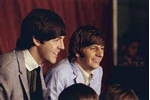
Paul McCartney and Ringo Starr are the only Beatles left on Earth. That’s a scary thought. They’re not getting any younger either. Ringo is 81, while Paul is 79. Paul and Ringo might not have had a relationship like Paul had with John Lennon and George Harrison, but they were best mates, being Beatles together. They had their ups and downs.
Now that Paul and Ringo are the only Beatles left, all the bad times have faded, and all the good times are frequently remembered. They are the only two people in the world who know what it feels like to be a Beatle. Since George died in 2001, they’ve gotten close and kept in touch.
Paul and Ringo have their own successful solo careers. Paul has been touring with the same band for almost 20 years, while Ringo tours with an ever-changing All-Star band. However hard it is to see each other in person, the pair always try to make time for one another.
Source: cheatsheet.com
details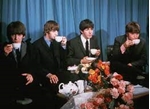
Elvis Presley and The Beatles were some of the biggest stars of their time. But they had an interesting relationship. In 1963, the English rock band was asked on Juke Box Jury their thoughts on Presley’s “Kiss Me Quick.” Nobody was a fan. Here’s what John Lennon, Paul McCartney, George Harrison, and Ringo Starr had to say, and more on their relationship with the King.
Presley first released “Kiss Me Quick” in 1962 on Pot Luck with Elvis. Then, the following year, it was released in the UK as a single (it came to the U.S. in 1964). When The Beatles were on Juke Box Jury, they were asked what they thought of the song.
“The only thing I don’t like about Elvis is the songs,” said Paul McCartney, as recorded in the book George Harrison on George Harrison. “You know, I love his voice. I used to love all the records like ‘Blue Suede Shoes’ and ‘Heartbreak Hotel’ — lovely. But I don’t like the songs now. And ‘Kiss Me Quick,’ it sounds like Blackpool on a sunny day.”
Ringo Starr agreed: “I don’t like it at all, no.”
Source: cheatsheet.com
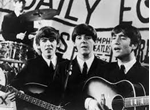
None of The Beatles considered themselves great musicians in 1963
The band didn’t anticipate being so successful
George Harrison said The Beatles didn’t play for the money. But the money was nice.
One year after The Beatles started their rise to fame in the United Kingdom, John Lennon, Paul McCartney, George Harrison, and Ringo Starr weren’t exactly confident in their individual abilities as musicians. But they were confident in how the group sounded as a whole. In a 1963 segment for the BBC program The Public Ear, the band members spoke about their musicianship and how successful they were at the time.
Source: cheatsheet.com
details
The 81-year-old musician pays homage to his fellow drummer who died at the age of 80 last month, and Charlie “has a lot of fun.”
Talking to BANG Showbiz and other media to promote his new EP “Change the World”, “Yes, I miss Charlie. He was a beautiful person. He was like a quiet man …
“Me and Charlie, we hung out. We didn’t like living together, living near London, finding ourselves at dinner or gigs.”
And the Beatles legend joked that Charlie had a hard time keeping the Rolling Stones together.
He said, “He had a band that was harder than I was with!”
Ringo’s new EP will be released on Friday (24.09.21).
The veteran musician recorded all the new tracks in his Roccabella West studio, as in his “Zoom In” EP. Ringo has previously revealed that he is working with the record’s “new friends.”
Source: pennsylvanianewstoday.com
details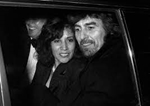
During his days in The Beatles, George Harrison was often overlooked. He was the quiet Beatle, but that wasn’t exactly true. George didn’t start as the strongest songwriter, but his songwriting skills skyrocketed halfway through his time as a Beatle. When he embarked on his solo career, he became the first Beatle to snatch a No. 1 song as a solo artist. Later, his career only got better and better.
However, being one of the best recording artists and a Beatle didn’t exactly convince George that fans would remember him when he was gone. His wife Olivia says this is impossible, but it’s also a very George thing to think.
George Harrison and his wife Olivia out to dinner in 1990.
Source: cheatsheet.com
details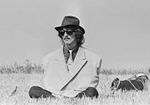
George Harrison had friends in strange places. He was friends with Formula One race car drivers and the comedians in Monty Python. It just proves how charismatic George was. But another group welcomed George that many fans probably don’t know about, the Hells Angels. Can you picture George Harrison hanging out with one of the most intimidating biker gangs?
However, George was friendly with them and told them to visit him if they ever visited England. He probably didn’t expect to be taken up on the offer. He also probably didn’t think the gang would set up camp at Apple Records either.
Source: cheatsheet.com
details

In 1964, millions of girls daydreamed about running off to England in search of the Beatles. Two 16-year-old girls from Cleveland Heights actually did it. Janice Hawkins (now Janice Mitchell) was one of them. Her new book, My Ticket To Ride: How I Ran Away to England to Meet the Beatles and Got Rock and Roll Banned in Cleveland gives a firsthand account of her adventure — and of the early days of Beatlemania.
Mitchell was bit by the Beatlemania bug from the moment she first heard “I Want To Hold Your Hand” on Cleveland radio station KYW in December 1963. But listening to the Beatles’ records, reading about them in magazines and even seeing them in concert wasn’t enough. She wanted to live in their world. Janice’s own life, in an unhappy home with a legal guardian who seemed to resent her, was deeply unhappy. To her, the Beatles sounded like freedom.
Source: Vince Grzegorek/clevescene.com
details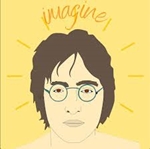
It’s been 50 years since the release of John Lennon’s most famous album and it appears to gain more deeply tangible meaning through the ages.
“Imagine” was released on Sept. 9, 1971 and even today, it is unquestionably a fan favorite, a global classic body of work. It’s durably clever in the way each of the ten tracks serves a different purpose while solidly connecting to Lennon’s imagery of attaining mental peace and having thoughts beyond himself.
There’s no surprise at the album’s initial success after its release in 1971 and after Lennon’s assassination almost a decade later. Since his larger-than-life fame with the Beatles, “Imagine” defined the artist’s mainstream pop music comeback after occasional singles and the generational disdain for his wife, Yoko Ono.
Source: Trinity Bland/thedailyaztec.com
details
Paul McCartney has recalled the story behind The Beatles‘ ‘Rocky Raccoon’ during a conversation with Bob Mortimer – you can watch the video below.
The chat between McCartney and comedian Mortimer arrived as a teaser for the former’s upcoming biography The Lyrics: 1956 To The Present, which is set for release on November 2.
It will recount the legendary musician’s life through his earliest boyhood compositions, songs by The Beatles, Wings, and from his lengthy solo career.
Arriving today (September 22), the one-minute trailer for the book sees Macca speak to Mortimer at the British Library in London – where he recalls “the story of ‘Rocky Raccoon’“.
A verse in the 1968 track goes: “Now the doctor came in stinking of gin/ And proceeded to lie on the table/ He said, ‘Rocky, you met your match’/ And Rocky said, ‘Doc, it’s only a scratch/ And I’ll be better, I’ll be better, Doc, as soon as I am able“.
Source: Tom Skinner/nme.com
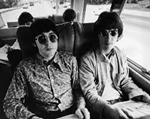
George Harrison and Paul McCartney met in 1957 after they realized that they went to the same school. They became friends, and George was like Paul’s little brother. A year later, Paul asked George to join his and John Lennon’s band, The Quarrymen. George was only 15, yet he impressed everyone with his guitar-playing skills. Reflecting on his time in The Beatles, Paul knows that he definitely underestimated George. He was a late bloomer, but George wrote some of The Beatles’ biggest hits.
George and Paul might have fought sometimes, but they were family. As George was dying, Paul sat at his bedside and held his hand for hours. After George’s death, only one thing helped Paul grieve his best friend.
Source: cheatsheet.com
details